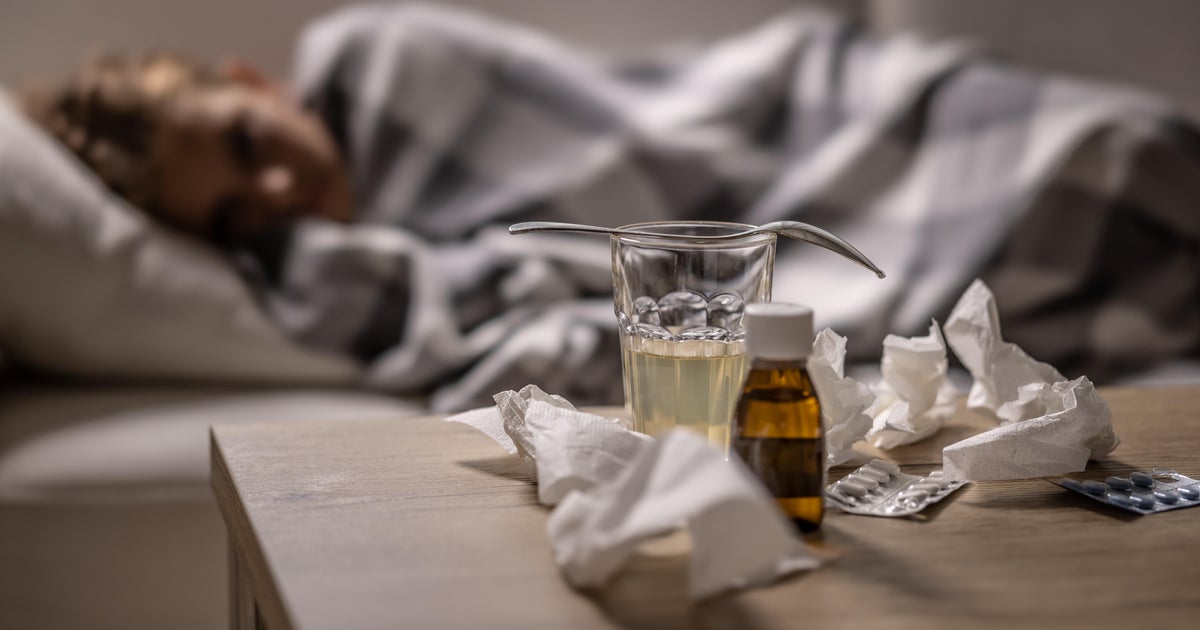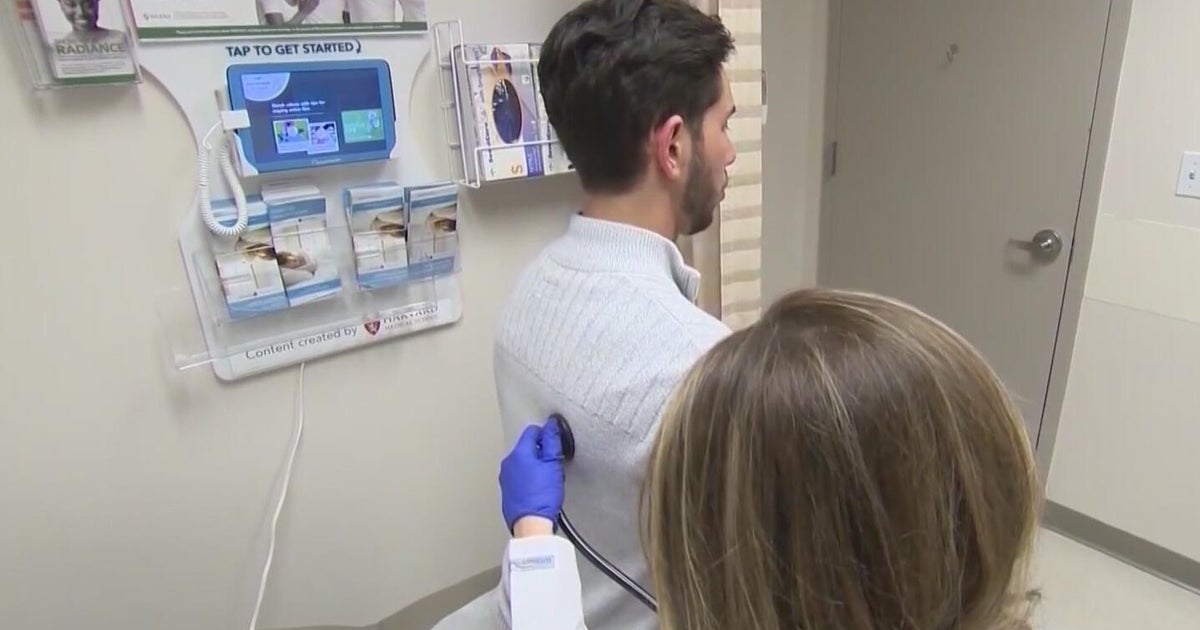Influencers promote raw milk despite FDA health warnings as bird flu spreads in dairy cows
On May 7, health influencer Paul Saladino, M.D.. posted a video to his X account that promoted feeding "raw dairy" to infants. The post received over 90,000 views and sparked strong backlash before it was removed the following day. Saladino regularly advocates for "animal-based" diets featuring raw milk, including on his TikTok channel where he has over half a million followers.
Interest in raw milk is rising in the U.S., fueled by both "wellness" and conservative influencers on social media. Posts promoting unpasteurized dairy have racked up millions of views, and celebrities including Gwyneth Paltrow have touted the supposed benefits.
But health officials have long warned against consuming raw dairy because it can harbor germs that pose serious health risks. The American Academy of Pediatrics warns that infants, children and pregnant women are at higher risk of illness from dairy products that haven't been pasteurized — a process that uses heat to kill off dangerous organisms.
"Do not consume unpasteurized dairy products," Dr. Nidhi Kumar recently told CBS New York. "I know there are people that are real advocates for it, but this is not the time to do it."
The Food and Drug Administration and the Centers for Disease Control and Prevention have stepped up their warnings after outbreaks of H5N1, or bird flu, started spreading through dairy farms in multiple U.S. states this spring.
High concentrations of the virus have been found in raw milk from infected herds, and officials have cautioned people to avoid milk that hasn't been commercially processed. Testing confirms pasteurization kills the virus, and the FDA says the commercial milk supply is safe.
What's behind raw milk's rising popularity?
Americans consumed raw milk until the late 19th century, when pasteurization became common practice. Back then, it caused hundreds of outbreaks of tuberculosis and bacterial infections, researchers say. Numerous states began mandating pasteurization and the U.S. federal government eventually banned interstate sales of unpasteurized milk in the late 1980s. Some states outlaw its sale.
Still, the product maintained its popularity with a relatively small number of Americans. Around 4.4% of Americans reported consuming raw milk in the most recent FDA research, which combined surveys from 2016 and 2019.
But in recent years, raw milk has seen a bit of a resurgence. Lawmakers in six states have legalized its sale since 2020, pushing the total number of states in which selling raw milk is legal to more than 30, though some only allow it to be sold on farms. Americans can buy unpasteurized milk in conservative and liberal states — at markets in Georgia and high-end grocery stores like Erewhon in California. Google Trends data shows a steady uptick in searches for the product.
And sales of raw milk appear to be on the rise, The Associated Press reports, citing data from market research firm NielsenIQ. Since the bird flu virus was confirmed in U.S. cattle in March, weekly sales of raw cow's milk have ticked up 21% to 65% compared with the same periods a year ago, according to NielsenIQ, whose figures include grocery stores and other retail outlets. Even so, it remains a very small fraction of overall milk sales.
The growing legalization of unpasteurized dairy has coincided with a decline in confidence in public health advice from the CDC since the coronavirus pandemic, which has been noted in research and polls. The trend has also aligned with an overall growth in the organic food industry.
At the same time, influencers on social media have claimed raw milk has health benefits that are lost in the pasteurization process — something scientists and public health officials strongly dispute. Saladino, who posted the video advocating raw milk for infants, did not respond to a CBS News request for comment as to why his post was removed. Several other videos on his account promote the consumption of raw milk, including one showing an infant drinking raw milk from a bucket.
TikTok videos promoting raw milk received millions of views in the last year, prompting some doctors and prominent content creators like Hank Greene to create videos to counter the misinformation they saw spreading about the product.
On Facebook, data from the social monitoring platform CrowdTangle shows that the most popular posts on "raw milk" over the last year referred favorably to the product. And on Truth Social — a platform founded by former President Donald Trump — users have made light of recent reports about animals dying after drinking raw dairy from infected cows, in posts with thousands of likes.
What's the current guidance on raw milk from public health officials?
The FDA and CDC strongly advise against the consumption of or sale of raw milk or raw milk products, warning that it "can carry dangerous bacteria such as Salmonella, E. coli, Listeria, Campylobacter, and others that cause foodborne illness."
"Raw milk can be contaminated with harmful germs that can make you very sick," the CDC says.
The FDA has also debunked what it calls "milk myths," including the false claim that pasteurization kills the nutritional value of milk or that it causes lactose intolerance or allergic reactions.
Officials have renewed warnings to consumers in recent weeks. An outbreak of bird flu in dairy cows was first reported in late March, and researchers do not yet know whether humans can contract bird flu by drinking unpasteurized raw milk from infected cows.
Mark McAfee, owner of Raw Farm USA in Fresno, California, he can't keep his unpasteurized products in stock.
"People are seeking raw milk like crazy," he told AP, noting that no bird flu has been detected in his herds or in California. "Anything that the FDA tells our customers to do, they do the opposite."
The federal government has not banned milk from infected herds from being sold, but officials advised farmers not to sell milk from cattle that have been infected. They've also recommended that milk from asymptomatic cows that were exposed gets pasteurized before being sold or fed to animals.
FDA testing has shown the pasteurization process is effective at inactivating the virus. The agency continually tests samples of the U.S. milk supply to ensure that pasteurized milk sold in grocery stores is safe for consumption.
What do we know about raw milk's link to bird flu?
The FDA has found high viral loads of H5N1 avian influenza in the raw milk of some of the infected herds, which are located across nine U.S. states. The United States Department of Agriculture has said testing indicates the disease may be spreading through dairy farms as healthy cows come in contact with the raw milk of infected cows. But officials are still studying to determine exactly how the virus is moving.
Some cats died after drinking the raw milk of cows infected with H5N1, according to a report published in the CDC journal Emerging Infectious Diseases.
So far, a Texas farmworker is the only person in the U.S. currently known to have contracted the virus after exposure to infected cows. His case was mild and presented as conjunctivitis. Officials have not publicly reported how the transmission occurred.
The CDC has said the bird flu virus currently poses a "low risk to the general public" — but the agency also said H5N1 has "pandemic potential." Health officials say they are working to be prepared for the possibility of a bird flu outbreak in humans.
"Unless you're in close contact with potentially infected animals or you're drinking unpasteurized milk, the risk to you right now is very low," said CBS News chief medical correspondent Dr. Jon LaPook.
"But remember, things can change," he added, "especially with viruses ... they can mutate, they can change, we've seen that happen. And that is why there is such concern among public health officials and others, and why the CDC and others are really trying to stay on top of this."






